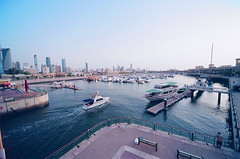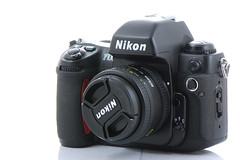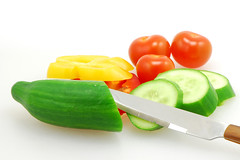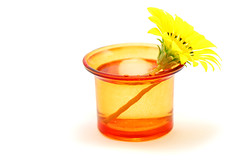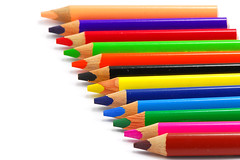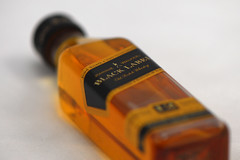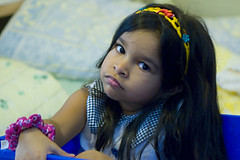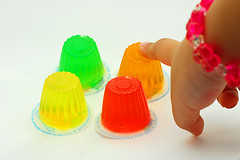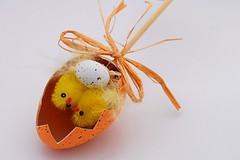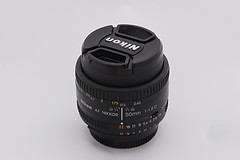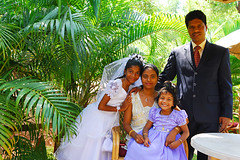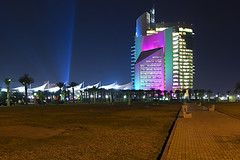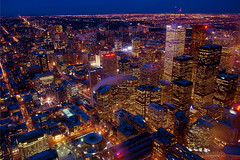The Gulf Run is an event organized by young Kuwaitis who want to practice car racing in a professional and secure environment.
The event is organized at the Bahrain International F1 track and is held annually. This year, k.theKuwait, one of the key organizers of the event, and is also a well-known Kuwaiti blogger gave me an invitation to join them in Bahrain for the event.
To begin with...
a. I've never been to Bahrain.
b. I have no idea why I have never been to Bahrain as it is just 30 minutes flight from Kuwait.
c. I always wanted to visit Bahrain.
So I had no hesitation to jump at the opportunity. k arranged a press pass for me, which means I will have some great vantage points during the actual race.
But before travelling to Bahrain, all the participating cars are prepped up in Kuwait and put on a display. This year, the cars were displayed at the Marina Crescent. I visited Marina today and had a fun time shooting many of the cars on display.
You can see them here
I am looking forward to my trip to Bahrain and hope to get some good shots of the actual race.
Photography is one of my passions (fitness being the other). This blog is focused on anything and everything to do with photography.
Friday, November 21, 2008
Tuesday, October 21, 2008
Photographing Smoke
I've been seeing a lot of interesting pictures of smoke on Flickr lately. In fact, there's a group called "artsmoke" that has an amazing collection of images dedicated to smoke.
Because smoke is so dynamic, the possibilities are literally infinite. You can never get the same image twice.
The process of capturing images of smoke is very nicely documented in this how-to guide.
There's also this hands-on kind of guide that I found on the artsmoke flickr group, which is also pretty good.
My first attempt at this form of photography looks passable enough.
Next, I need to do this in a room with absolutely no ventilation.
Because smoke is so dynamic, the possibilities are literally infinite. You can never get the same image twice.
The process of capturing images of smoke is very nicely documented in this how-to guide.
There's also this hands-on kind of guide that I found on the artsmoke flickr group, which is also pretty good.
My first attempt at this form of photography looks passable enough.
Next, I need to do this in a room with absolutely no ventilation.
Friday, September 26, 2008
Nikon F100 - First results
I finally got around to developing the film that I shot with the Nikon F100. The place where I got it developed also gave me a CD of all the developed pictures, which is pretty cool. It's almost like shooting digital.
The thing that I love about the F100 is that my lenses give true focal length as opposed to the D200, which has a small sensor resulting in a 1.5x crop factor. In other words, when I mount a 50mm lens on the F100, it appears as 50mm, while on the D200, the same lens appears as 75mm (50x1.5 crop factor).
This makes ultra-wide angle shooting a bit of a problem on the D200. Take for example the Sigma 12-24mm lens that I own. On the D200, it appears as 18-36mm. That's pretty wide...but when I mount the same lens on the F100, it is actually 12-24mm!!. That super wide.
The crop factor problem has now been solved by Nikon with the newer "FX" format cameras (D3 and D700 are the only 2 cameras from Nikon that currently have a FX sensor). I will eventually upgrade to these camera bodies but not just yet - as the D200 that I own is good enough for the time being.
This picture of the Sharq marina was taken with the Sigma at it's widest focal length of 12mm. It is so wide, that the entire marina can be captured on film. Of course, there is serious perspective distortion but that expected when shooting at such wide focal range.
I was not happy with the colors but I believe that has more to do with the film selection than with the camera itself. I am looking to see if I can get hold of some pro-grade film to do more experiments with film.
The thing that I love about the F100 is that my lenses give true focal length as opposed to the D200, which has a small sensor resulting in a 1.5x crop factor. In other words, when I mount a 50mm lens on the F100, it appears as 50mm, while on the D200, the same lens appears as 75mm (50x1.5 crop factor).
This makes ultra-wide angle shooting a bit of a problem on the D200. Take for example the Sigma 12-24mm lens that I own. On the D200, it appears as 18-36mm. That's pretty wide...but when I mount the same lens on the F100, it is actually 12-24mm!!. That super wide.
The crop factor problem has now been solved by Nikon with the newer "FX" format cameras (D3 and D700 are the only 2 cameras from Nikon that currently have a FX sensor). I will eventually upgrade to these camera bodies but not just yet - as the D200 that I own is good enough for the time being.
This picture of the Sharq marina was taken with the Sigma at it's widest focal length of 12mm. It is so wide, that the entire marina can be captured on film. Of course, there is serious perspective distortion but that expected when shooting at such wide focal range.
I was not happy with the colors but I believe that has more to do with the film selection than with the camera itself. I am looking to see if I can get hold of some pro-grade film to do more experiments with film.
Monday, September 22, 2008
Reflections
I was trying to figure out a way to shoot still objects with some nice reflections. Not 100% reflections using a mirror - just a hint of the object's reflection.
The solution that I came up with is pretty simple (and cheap).
1. Take a kitchen cutting board (I used a white plastic one, but I guess any board will do; even some hard cardboard should be fine)
2. Tape some white A4 paper over it.
3. Wrap it in some plastic; preferably the self-adhesive plastic roll that you find in the bookstores to wrap school books.
The plastic over the white A4 paper gives a nice shiny reflections to your objects.
To take this picture, I placed my DIY reflective board inside a lightbox and had some fun taking pictures of various objects that I found around the house.
The solution that I came up with is pretty simple (and cheap).
1. Take a kitchen cutting board (I used a white plastic one, but I guess any board will do; even some hard cardboard should be fine)
2. Tape some white A4 paper over it.
3. Wrap it in some plastic; preferably the self-adhesive plastic roll that you find in the bookstores to wrap school books.
The plastic over the white A4 paper gives a nice shiny reflections to your objects.
To take this picture, I placed my DIY reflective board inside a lightbox and had some fun taking pictures of various objects that I found around the house.
Thursday, September 04, 2008
Going back to basics with the Nikon F100.
I thought I'll try a little bit of film photography. Back in the good old days (before switching to digital), I used to own Minolta Dynax 300si. It took some pretty good pictures but lacked the functionality that I have now become accustomed to.
I've always had my eye on the Nikon FM2 (a fully manual camera) and this one, the Nikon F100. After I recently signed up for Paypal & eBay, I thought I'll give it a try to see if I could pick up one at a decent price.
I initially started bidding on a FM2 but quickly discovered that I can get a F100 for almost the same price. I located some mint-condition F100's and started bidding. This was my first experience in eBay bidding and I finally won this item for $274, which is a pretty decent deal.
The item was quickly shipped to my US mailing address and I finally received it 2 days back. The camera itself is in excellent condition and looks almost new. Handling wise, it feels exactly like my D200 and I am looking forward to trying out my Nikkor lens collection on this bad boy. The great thing is that because this is a SLR camera, I do not have to worry about crop factors. The ultra-wide Sigma 12-24 that I have will actually be really ultra-wide. It should be fun trying it out.
I've always had my eye on the Nikon FM2 (a fully manual camera) and this one, the Nikon F100. After I recently signed up for Paypal & eBay, I thought I'll give it a try to see if I could pick up one at a decent price.
I initially started bidding on a FM2 but quickly discovered that I can get a F100 for almost the same price. I located some mint-condition F100's and started bidding. This was my first experience in eBay bidding and I finally won this item for $274, which is a pretty decent deal.
The item was quickly shipped to my US mailing address and I finally received it 2 days back. The camera itself is in excellent condition and looks almost new. Handling wise, it feels exactly like my D200 and I am looking forward to trying out my Nikkor lens collection on this bad boy. The great thing is that because this is a SLR camera, I do not have to worry about crop factors. The ultra-wide Sigma 12-24 that I have will actually be really ultra-wide. It should be fun trying it out.
Thursday, April 24, 2008
The 18% Grey Card
With my recent obsession with macro and stock-type photography, I found it a necessity to get hold of a 18% grey card.
What's a 18% grey card, you ask?
Our modern cameras have sophisticated meters that determine what is the "right" amount of light that should be allowed inside the camera's sensor to record an image that is neither under-exposed or over-exposed.
The exposure is determined by 2 elements:
1. Shutter speed.
2. Lens Aperture.
The shutter speed in measured in fractions of a second. Thus, if you see 250 in your view finder, it means that the camera's shutter will be opened 250th of a second (that's very fast, btw).
The lens aperture is the amount of the len's diaphragm that is opened to allow more or less light to enter the camera's chamber. Lens aperture is measured in f stops, and a higher f number indicates a smaller diapghragm (meaning less light is allowed) and a lower f number (meaning the diaphragm is opened more) will allow more light inside. I know it sounds messy - but that's a photographer's life.
So how does the camera determine how much aperture to open and what shutter speed to use?
That's where the camera meter comes in. It is designed to analyze the existing light and select an appropriate aperture/shutter combination that will result in an ideal image.
But the camera's meter is actually a very basic piece of electronics. It simply assumes that the scene being recorded is made of 18% grey and computes the aperture/shutter speed combination based on that assumption.
But why 18% grey?, you may ask...
Good question. When camera manufacturers were designing light meters, they determined that generally, an "average" scene consists of 18% grey. They arrived at this conclusion by shooting wide variety of shots under different lighting combinations.
Of course, not every scene is 18% grey - which is where the camera meter gets fooled. For example, take a picture of a person in front of a white wall, and chances are that the wall will appear grey, instead of white. Now take the same person and place him in front of a black wall and the black wall will not look black at all. In fact, it will appear greyish.
And therein lies the problem. The camera meter wants everything to be grey; but our world is much more complex than that.
Take this picture that I took of a diamond necklace. It was placed on a pristine white A4 paper.
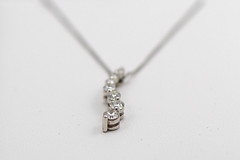
Notice how the background looks greyish. That's because the camera's meter got overwhelmed by the amount of white in the image (while it was expecting an 18% grey).
In normal shooting situations, you can use the EV compensation and rely on your camera's histogram to ensure a reasonably accurate exposure.
But when you are shooting stock-type photography (like the vegetables here), you must get the exact exposure and the whites must look like white.
To do this:
1. Arrange your camera, lights, and subject till you are satisfied with the arrangement.
2. Now place a 18% grey card in front of the subject and take a meter
reading directly off the grey card. Let's assume you are using aperture priority. In this case, the camera's meter will tell you the correct shutter speed to use. If you have seen professional phtographers shooting models, they usually first ask the model to hold a grey card in front of them. Once they are satisfied with the reading, they will remove the grey card and continue with the shooting.
3. You can now remove the grey card and set your camera to manual exposure and set the same f stop that you used in step #2, and enter the shutter speed recommended by the camera.
You can now be sure that your exposures will be perfect.
Enjoy.
What's a 18% grey card, you ask?
Our modern cameras have sophisticated meters that determine what is the "right" amount of light that should be allowed inside the camera's sensor to record an image that is neither under-exposed or over-exposed.
The exposure is determined by 2 elements:
1. Shutter speed.
2. Lens Aperture.
The shutter speed in measured in fractions of a second. Thus, if you see 250 in your view finder, it means that the camera's shutter will be opened 250th of a second (that's very fast, btw).
The lens aperture is the amount of the len's diaphragm that is opened to allow more or less light to enter the camera's chamber. Lens aperture is measured in f stops, and a higher f number indicates a smaller diapghragm (meaning less light is allowed) and a lower f number (meaning the diaphragm is opened more) will allow more light inside. I know it sounds messy - but that's a photographer's life.
So how does the camera determine how much aperture to open and what shutter speed to use?
That's where the camera meter comes in. It is designed to analyze the existing light and select an appropriate aperture/shutter combination that will result in an ideal image.
But the camera's meter is actually a very basic piece of electronics. It simply assumes that the scene being recorded is made of 18% grey and computes the aperture/shutter speed combination based on that assumption.
But why 18% grey?, you may ask...
Good question. When camera manufacturers were designing light meters, they determined that generally, an "average" scene consists of 18% grey. They arrived at this conclusion by shooting wide variety of shots under different lighting combinations.
Of course, not every scene is 18% grey - which is where the camera meter gets fooled. For example, take a picture of a person in front of a white wall, and chances are that the wall will appear grey, instead of white. Now take the same person and place him in front of a black wall and the black wall will not look black at all. In fact, it will appear greyish.
And therein lies the problem. The camera meter wants everything to be grey; but our world is much more complex than that.
Take this picture that I took of a diamond necklace. It was placed on a pristine white A4 paper.

Notice how the background looks greyish. That's because the camera's meter got overwhelmed by the amount of white in the image (while it was expecting an 18% grey).
In normal shooting situations, you can use the EV compensation and rely on your camera's histogram to ensure a reasonably accurate exposure.
But when you are shooting stock-type photography (like the vegetables here), you must get the exact exposure and the whites must look like white.
To do this:
1. Arrange your camera, lights, and subject till you are satisfied with the arrangement.
2. Now place a 18% grey card in front of the subject and take a meter
reading directly off the grey card. Let's assume you are using aperture priority. In this case, the camera's meter will tell you the correct shutter speed to use. If you have seen professional phtographers shooting models, they usually first ask the model to hold a grey card in front of them. Once they are satisfied with the reading, they will remove the grey card and continue with the shooting.
3. You can now remove the grey card and set your camera to manual exposure and set the same f stop that you used in step #2, and enter the shutter speed recommended by the camera.
You can now be sure that your exposures will be perfect.
Enjoy.
Friday, April 18, 2008
Getting the perfect "White Balance"
At one point or the other, all of us have come across a situation where our photo just does not feel right. The whites in the image look more like sickly yellow, or magenta or some other color; other than white.
One of the common reasons for this is that your camera was unable to correctly estimate the color temperature. Back in the old days of film, there was no concept of white balance. Professional photographers would load their cameras with specific temperature balanced films. For example, if the photographer knew in advance that his shooting would be done under tungsten lights, then he would load a tungsten balanced film. Similarly if the shooting was done in daylight, then he would load a daylight balanced film. You can understand how complicated this process would be.
Luckily for us, our digital cameras are not film-based but sensor based; and the software in the camera can automatically interpret the data coming from the sensor and correct it to match the lighting conditions. The trick is to figure out the correct lighting conditions.
Digital cameras, to a very large extent, are very good at determining the lighting conditions at the time of taking the picture. They measure the color temperature and the software manipulates the image to match the color temperature.
But they do get confused now and then. This mostly happens when shooting under mixed lighting conditions (a room lit simultaneously by light bulbs and flourescent lights for example) or where the light is changing rapidly (theatre/concerts etc.).
One of the best ways of overcoming white balance confusion is to shoot in RAW and then determine the correct white balance during post processing.
If RAW shooting is not feasible (or you don't want to spend time in post processing), then the next best option is to use a preset white balance. Almost all advanced digital cameras allow you to "compute" an accurate white balance.
To get a proper white balance:
1. Set your camera to measure the white balance. On my Nikon D200, I turn the white balance dial till it says "PRE". On my Casio P&S, the option is available in the menu. Each camera will have it's own way of measuring the white balance.
2. Put a white A4 paper in front of the subject. If you are shooting a person, you can make the person hold the paper.
3. Focus on the paper so that the camera can see only the paper and nothing else. You may have to move in a little closer or zoom in.
4. Click the shutter button and wait for your camera to measure the balance and set the temperature.
5. Now you can start taking pictures with the knowledge that the whites in the pictures will actually look white.
6. Do remember to reset the white balance once you are finished (or if the lighting conditions change) otherwise your camera will be stuck on the last known white balance and subsequent pictures will not come out properly.
Some people deliberately fool the white balance on the camera to get artistic results. But that's another story.
One of the common reasons for this is that your camera was unable to correctly estimate the color temperature. Back in the old days of film, there was no concept of white balance. Professional photographers would load their cameras with specific temperature balanced films. For example, if the photographer knew in advance that his shooting would be done under tungsten lights, then he would load a tungsten balanced film. Similarly if the shooting was done in daylight, then he would load a daylight balanced film. You can understand how complicated this process would be.
Luckily for us, our digital cameras are not film-based but sensor based; and the software in the camera can automatically interpret the data coming from the sensor and correct it to match the lighting conditions. The trick is to figure out the correct lighting conditions.
Digital cameras, to a very large extent, are very good at determining the lighting conditions at the time of taking the picture. They measure the color temperature and the software manipulates the image to match the color temperature.
But they do get confused now and then. This mostly happens when shooting under mixed lighting conditions (a room lit simultaneously by light bulbs and flourescent lights for example) or where the light is changing rapidly (theatre/concerts etc.).
One of the best ways of overcoming white balance confusion is to shoot in RAW and then determine the correct white balance during post processing.
If RAW shooting is not feasible (or you don't want to spend time in post processing), then the next best option is to use a preset white balance. Almost all advanced digital cameras allow you to "compute" an accurate white balance.
To get a proper white balance:
1. Set your camera to measure the white balance. On my Nikon D200, I turn the white balance dial till it says "PRE". On my Casio P&S, the option is available in the menu. Each camera will have it's own way of measuring the white balance.
2. Put a white A4 paper in front of the subject. If you are shooting a person, you can make the person hold the paper.
3. Focus on the paper so that the camera can see only the paper and nothing else. You may have to move in a little closer or zoom in.
4. Click the shutter button and wait for your camera to measure the balance and set the temperature.
5. Now you can start taking pictures with the knowledge that the whites in the pictures will actually look white.
6. Do remember to reset the white balance once you are finished (or if the lighting conditions change) otherwise your camera will be stuck on the last known white balance and subsequent pictures will not come out properly.
Some people deliberately fool the white balance on the camera to get artistic results. But that's another story.
Saturday, April 12, 2008
Getting better at this.
After nearly 1 week of experimenting with various lights, white balance, exposure and focusing, I've finally figured out the whole process of macro photography.
I still need a few more things to make an ultimate macro setup.
1. An 18% grey card. Something like this. Having a proper grey card will allow me to do manual exposure; rather than playing with EV shift and histogram checking after each shot. I have to make a trip to the local photo shop to see if they have something similar. Ordering from Amazon will take at least 2 weeks.
2. Daylight balanced light-bulbs. Also known as full-spectrum light bulbs or 5000k (Kelvin) bulbs, these bulbs emit light at 5000k temperature; the same temperature used by flash lights and closely resemble natural light. Having daylight balanced lights would mean I could simply dial in the white balance to 5000k and I would not have to worry about color cast or white balance correction in post processing. I am not sure if such bulbs are available in Kuwait. I checked all the usual suspects (photo shops, sultan center etc.), but haven't found exactly what I am looking for.
Once I have all the necessary equipment, I'll write a detailed review of the whole process of macro-photography of still-objects.
I still need a few more things to make an ultimate macro setup.
1. An 18% grey card. Something like this. Having a proper grey card will allow me to do manual exposure; rather than playing with EV shift and histogram checking after each shot. I have to make a trip to the local photo shop to see if they have something similar. Ordering from Amazon will take at least 2 weeks.
2. Daylight balanced light-bulbs. Also known as full-spectrum light bulbs or 5000k (Kelvin) bulbs, these bulbs emit light at 5000k temperature; the same temperature used by flash lights and closely resemble natural light. Having daylight balanced lights would mean I could simply dial in the white balance to 5000k and I would not have to worry about color cast or white balance correction in post processing. I am not sure if such bulbs are available in Kuwait. I checked all the usual suspects (photo shops, sultan center etc.), but haven't found exactly what I am looking for.
Once I have all the necessary equipment, I'll write a detailed review of the whole process of macro-photography of still-objects.
Wednesday, April 09, 2008
Playing with Macro Lens
After the initial fondling, it was time to start playing with the 105mm macro lens. There are a couple of things worth noting about macro lenses - things that I realized only after trying to shoot with this lens.
1. Variable aperture. This was a shock to me. All my fast lenses (read: fixed aperture lenses) stay fast regardless of zoom or focus distance. So when I open my 80-200 f2.8 wide to it's max aperture of 2.8, it remains 2.8 unless I explicity change it. Not so with this baby. The max aperture is determined by "focus distance", so the closer you focus, the harder it is to achieve the stated f2.8 aperture. It's really a sort of a variable aperture lens.
2. Very painstaking to focus. This is a AF-S (silent wave motor) lens. All my previous experiences with AF-S lenses is that they focus silently and very very fast. This is not true for macro lenses. Because it's focusing range is so great, I found that the lens was hunting like crazy (very silently, of course). There is a focus-limit selector that you can set if you know the focus range is more than 0.5 meters (this limits the focusing from 0.5 meters to infinity but prevents macro focusing). The focus-limit switch speeds up the focusing a bit; but don't expect to whip up this lens and take the "candid moment" shot.
3. Shallow DOF. My 30mm f1.4 has a very shallow depth-of-field but then again, it's not a macro lens and cannot focus very close. This little baby has such a shallow DOF that even a tiny change in distance from camera to subject will throw the focus off. Observe the DOF in this tiny bottle. The DOF is limited only to a few centimeters.
Of course, none of these are limitations. They are basically features attributed to macro lenses. You just have to get adjusted to it.
This is a pretty fanstastic review of this lens.
1. Variable aperture. This was a shock to me. All my fast lenses (read: fixed aperture lenses) stay fast regardless of zoom or focus distance. So when I open my 80-200 f2.8 wide to it's max aperture of 2.8, it remains 2.8 unless I explicity change it. Not so with this baby. The max aperture is determined by "focus distance", so the closer you focus, the harder it is to achieve the stated f2.8 aperture. It's really a sort of a variable aperture lens.
2. Very painstaking to focus. This is a AF-S (silent wave motor) lens. All my previous experiences with AF-S lenses is that they focus silently and very very fast. This is not true for macro lenses. Because it's focusing range is so great, I found that the lens was hunting like crazy (very silently, of course). There is a focus-limit selector that you can set if you know the focus range is more than 0.5 meters (this limits the focusing from 0.5 meters to infinity but prevents macro focusing). The focus-limit switch speeds up the focusing a bit; but don't expect to whip up this lens and take the "candid moment" shot.
3. Shallow DOF. My 30mm f1.4 has a very shallow depth-of-field but then again, it's not a macro lens and cannot focus very close. This little baby has such a shallow DOF that even a tiny change in distance from camera to subject will throw the focus off. Observe the DOF in this tiny bottle. The DOF is limited only to a few centimeters.
Of course, none of these are limitations. They are basically features attributed to macro lenses. You just have to get adjusted to it.
This is a pretty fanstastic review of this lens.
Monday, April 07, 2008
Micro-Nikkor 105mm VR - First Impression
When I get hold of a new lens, it is customary for me to plug it into my camera, and take a quick shot of my daughter. That is exactly what I did when I got my new toy, the 105mm Micro-Nikkor.
It is also customary for me to take my first shot with the most extreme settings. This usually means shooting wide open (f2.8 in this case), and since this is my first VR (vibration reduction) lens, I wanted to see if the VR really works. This means shooting at speeds which usually result in blurry images.
This image is taken using Aperture priority, wide open at f3.2 (I will explain why it couldn't be f2.8 in my next post), and at shutter speed of 1/15th of a second. In order to achieve this modest shutter speed, I had to crank up the ISO to 800.
Conclusions: The VR works, and I can safely take hand-held shots at low shutter speeds (as long as the subject is not moving).
Keep in mind that this is a macro lens so taking picture of my daughter is not the most ideal way to test this lens. I will now spend some quality time with a lightbox and some tiny objects trying some real macro shots.
It is also customary for me to take my first shot with the most extreme settings. This usually means shooting wide open (f2.8 in this case), and since this is my first VR (vibration reduction) lens, I wanted to see if the VR really works. This means shooting at speeds which usually result in blurry images.
This image is taken using Aperture priority, wide open at f3.2 (I will explain why it couldn't be f2.8 in my next post), and at shutter speed of 1/15th of a second. In order to achieve this modest shutter speed, I had to crank up the ISO to 800.
Conclusions: The VR works, and I can safely take hand-held shots at low shutter speeds (as long as the subject is not moving).
Keep in mind that this is a macro lens so taking picture of my daughter is not the most ideal way to test this lens. I will now spend some quality time with a lightbox and some tiny objects trying some real macro shots.
Thursday, March 27, 2008
On Second Thoughts...
Last week, I decided to upgrade my 50 mm f1.8 to the more professional grade 50 mm f1.4. I even placed the order on Amazon. One week passed, and Amazon still had problems fulfilling the order. This got me thinking...
Why exactly am I paying $300 for a lens that gives me merely a 1/3 wider aperture compared to the lens that I already own?. I am not exactly a professional, and even though I have done a couple of assignments, this is not my full time job. The f1.8 is a fine lens and I felt that the $300 would be better spent in purchasing a lens that I don't own.
Since I have started doing macro work, I felt that spending money on a dedicated macro lens would be more appropriate - and the 105 mm AF-S VR Micro Nikkor seemed like just the ticket. Of course, it's costs a whole lot more than $300; but this lens is legendary, so I had no qualms cancelling my order for the 50mm, and placing the order for the macro lens.
I did check with the local dealer what price they could sell it, but as usual, they are darn expensive. By purchasing from Amazon, I reckon I will save around 65 KD; which is not exactly chump change. I do wish the local dealers realize that internet has made everything global, and such ridiculous markups are no longer acceptable.
Why exactly am I paying $300 for a lens that gives me merely a 1/3 wider aperture compared to the lens that I already own?. I am not exactly a professional, and even though I have done a couple of assignments, this is not my full time job. The f1.8 is a fine lens and I felt that the $300 would be better spent in purchasing a lens that I don't own.
Since I have started doing macro work, I felt that spending money on a dedicated macro lens would be more appropriate - and the 105 mm AF-S VR Micro Nikkor seemed like just the ticket. Of course, it's costs a whole lot more than $300; but this lens is legendary, so I had no qualms cancelling my order for the 50mm, and placing the order for the macro lens.
I did check with the local dealer what price they could sell it, but as usual, they are darn expensive. By purchasing from Amazon, I reckon I will save around 65 KD; which is not exactly chump change. I do wish the local dealers realize that internet has made everything global, and such ridiculous markups are no longer acceptable.
Monday, March 24, 2008
Making a DIY lightbox.
I've been meaning to make a cheap light-box, using this tutorial. But everytime I think of starting the project, I stop; because I can't figure out where I will store the darn thing. I don't have the luxury of having many spare rooms in the house.
Couple of months back, I had purchased a small foldable lightbox. This picture of an easter egg is taken using this lightbox; but it's too small for anything other than tiny objects. I need more working space. I have to make one more trip to that photography shop in the city to see if they can offer me something more compact that a big ugly looking box.
Lightboxes are a great way of taking pictures of still objects. Because the light box is completely white, it distributes the light equally so that you don't get the harsh shadows. For example, in this picture, I just placed the lightbox near the window which had some morning light streaming in. No fancy lighting. And the pictures turn out great!.
Couple of months back, I had purchased a small foldable lightbox. This picture of an easter egg is taken using this lightbox; but it's too small for anything other than tiny objects. I need more working space. I have to make one more trip to that photography shop in the city to see if they can offer me something more compact that a big ugly looking box.
Lightboxes are a great way of taking pictures of still objects. Because the light box is completely white, it distributes the light equally so that you don't get the harsh shadows. For example, in this picture, I just placed the lightbox near the window which had some morning light streaming in. No fancy lighting. And the pictures turn out great!.
Saturday, March 22, 2008
Upgrading to 50mm f1.4
I've had this 50mm f1.8 prime lens for about 2 years. It's is well-built and one of the best bargain lens from Nikon. Depending on where you buy it from, the price is around $120.
I have never figured out why this lens is sold at such a low price. In the pre-digital era (yes, when people used to shoot with film), this lens was usually bundled as the "kit" lens for most of the Nikon pro-bodies. It may be that over the years, Nikon (and Canon) have figured out how to streamline the manufacturing process of this lens - hence the affordability.
It is a fanstastic portrait lens. On Nikon dSLR bodies (except the newer full-frame D3), the focal length of this lens translates into 75mm (1.5 crop sensor means 50mm x 1.5 = 75mm). This is a good range for taking head shots without any perspective distortion.
It is also an amazing lens for low-light work. The f1.8 means you can work in low-light interiors without a flash and still get useful results.
However, my eye has been on it's more faster cousin. The 50mm f1.4 AFD. For just 1/3rd stop faster focal length, it costs 3 times as much. When I saw Amazon selling it for a $20 discount, I did one of those "impulse" buys and hit the order button.
Once I get hold of the new lens, I will most likely (and grudingly) get rid of this fine piece of Nikon engineering.
I have never figured out why this lens is sold at such a low price. In the pre-digital era (yes, when people used to shoot with film), this lens was usually bundled as the "kit" lens for most of the Nikon pro-bodies. It may be that over the years, Nikon (and Canon) have figured out how to streamline the manufacturing process of this lens - hence the affordability.
It is a fanstastic portrait lens. On Nikon dSLR bodies (except the newer full-frame D3), the focal length of this lens translates into 75mm (1.5 crop sensor means 50mm x 1.5 = 75mm). This is a good range for taking head shots without any perspective distortion.
It is also an amazing lens for low-light work. The f1.8 means you can work in low-light interiors without a flash and still get useful results.
However, my eye has been on it's more faster cousin. The 50mm f1.4 AFD. For just 1/3rd stop faster focal length, it costs 3 times as much. When I saw Amazon selling it for a $20 discount, I did one of those "impulse" buys and hit the order button.
Once I get hold of the new lens, I will most likely (and grudingly) get rid of this fine piece of Nikon engineering.
Friday, March 21, 2008
Stock Photography
I decided to enroll into istockphoto.com, one of the most popular stock photography site. The idea of stock photography is very simple. You upload your pictures to the site, and then people purchase the pictures at a very low price. The photographer is paid in cents rather than dollars; but because so many people download these pictures, the cents add up.
iStockphoto.com is now owned by Getty Images, which is one of the top stock agencies. Getting into iStockphoto was not as easy as I thought!
Even before you are allowed to upload images, you have to go through an online tutorial, and then answer an exam to ensure you understand their rules of uploading images to the site.
Once you successfully pass the test, you have to load 3 sample images (highest resolution possible) for the istockphoto admins to determine if your photos meet their standards.
This is where I got stuck. At first, I loaded 3 very good images but all got rejected because they did not demonstrate enough variety (they were all pictures of architechture). Next time, the picture was slightly over-exposed, or the focus was not "dead-on", or the picture was over-corrected in photoshop.
The whole process was a very valuable learning experience. Of course, I did manage to give them the 3 "high quality, perfectly exposed, perfectly in focus, diverse" images they were looking for :).
This image of my niece Milica was the last image that was approved by the istockphoto admins and I became an authorized contributor of istockphoto.
Now comes the hard part of actually shooting and uploading "stock-type" images; and hopefully making a few bucks in the process.
iStockphoto.com is now owned by Getty Images, which is one of the top stock agencies. Getting into iStockphoto was not as easy as I thought!
Even before you are allowed to upload images, you have to go through an online tutorial, and then answer an exam to ensure you understand their rules of uploading images to the site.
Once you successfully pass the test, you have to load 3 sample images (highest resolution possible) for the istockphoto admins to determine if your photos meet their standards.
This is where I got stuck. At first, I loaded 3 very good images but all got rejected because they did not demonstrate enough variety (they were all pictures of architechture). Next time, the picture was slightly over-exposed, or the focus was not "dead-on", or the picture was over-corrected in photoshop.
The whole process was a very valuable learning experience. Of course, I did manage to give them the 3 "high quality, perfectly exposed, perfectly in focus, diverse" images they were looking for :).
This image of my niece Milica was the last image that was approved by the istockphoto admins and I became an authorized contributor of istockphoto.
Now comes the hard part of actually shooting and uploading "stock-type" images; and hopefully making a few bucks in the process.
Thursday, March 20, 2008
Event Photography.
Up to now, I have stayed away from event photography. I am not really a "people" person (or at least that's how I used to look at myself).
I recently had an opportunity to do 2 events that made me change that attitude.
The first was the communion ceremony of my lovely niece, Milica. I decided to fly to Goa for a quick trip with my D200. To keep my travel kit light, I just packed the 17-55 lens and the SB-800 flash. This lens is really the absolute number one choice for event photography. It provides all the required ranges to capture group photos or an occasional portrait shot. The wide aperture of f2.8 ensures that it handles very well in low-light situation.
I found myself enjoying the whole experience. With the formidable D200 around my neck, everyone simply assumed I am some official photographer, and I could engage anyone for a photo, by simply giving a smile and pointing to my camera to get their acceptance to take the picture.
The second opportunity I had was a birthday party for a close friend's daughter. This was purely an indoor affair; which means the 17-55 + the SB-800 is all that I needed to take great indoor shots.
I recently had an opportunity to do 2 events that made me change that attitude.
The first was the communion ceremony of my lovely niece, Milica. I decided to fly to Goa for a quick trip with my D200. To keep my travel kit light, I just packed the 17-55 lens and the SB-800 flash. This lens is really the absolute number one choice for event photography. It provides all the required ranges to capture group photos or an occasional portrait shot. The wide aperture of f2.8 ensures that it handles very well in low-light situation.
I found myself enjoying the whole experience. With the formidable D200 around my neck, everyone simply assumed I am some official photographer, and I could engage anyone for a photo, by simply giving a smile and pointing to my camera to get their acceptance to take the picture.
The second opportunity I had was a birthday party for a close friend's daughter. This was purely an indoor affair; which means the 17-55 + the SB-800 is all that I needed to take great indoor shots.
Wednesday, March 19, 2008
A period of introspection.
Ever since we returned back to Kuwait (after our trip to Toronto in January), I've been having a tough time to get back into photography. The first few weeks were immersed in work and a long business trip to Saudi Arabia. But even after returning back to a normal schedule, I just can't seem to get the inspiration to go out and do some shooting.
This picture of the KPC building was the only picture I have taken during the past 2 months!!
The weather is really great these days (well, most of the time), and it's spring time with lots of flowers springing up everywhere. I need something to make me get out of the house. Perhaps a cool beer, which I miss from my Canada trip?
I did manage to do 2 events. The first was the communion of my niece in India. I flew there just for the occasion, and managed to get some great pictures of the whole ceremony. I am currently doing a project to get these pictures printed through www.blurb.com. I will post about this experience very soon.
The second event was a birthday party that I did last week for the daughter of a very close friend. The D200 paired with the 17-55 f2.8 and the SB-800 speed-light was a fantastic combination. I wish I could post some of the pictures, but I would feel uncomfortable posting pictures of friends without their consent.
This picture of the KPC building was the only picture I have taken during the past 2 months!!
The weather is really great these days (well, most of the time), and it's spring time with lots of flowers springing up everywhere. I need something to make me get out of the house. Perhaps a cool beer, which I miss from my Canada trip?
I did manage to do 2 events. The first was the communion of my niece in India. I flew there just for the occasion, and managed to get some great pictures of the whole ceremony. I am currently doing a project to get these pictures printed through www.blurb.com. I will post about this experience very soon.
The second event was a birthday party that I did last week for the daughter of a very close friend. The D200 paired with the 17-55 f2.8 and the SB-800 speed-light was a fantastic combination. I wish I could post some of the pictures, but I would feel uncomfortable posting pictures of friends without their consent.
Tuesday, January 22, 2008
Slideshows
Slideshows are a pretty neat way of showcasing your photographs, and there are plenty of free tools on the net that can do this for you. I came across a friend's post showcasing a new tool from slide.com that is dead-easy to use; especially if you are using a photo-sharing site like flickr. I just entered my flickr name and it pulled out all my sets. As a test, I just selected my recently shot "Toronto" set, and I was done. It spewed out some code that I just paste into my blog, and the slide show is up and running.
Very cool.
Wednesday, January 02, 2008
The Amazing CN Tower
We got up today to a bright and clear day after 2 days of heavy snow and dull weather. I thought this would be a great opportunity to visit the Toronto CN tower - one of the tallest structures in the world. The clear weather meant I would have some good photo opportunities.
We reached the tower at around 11:00 AM. It was indeed a great day to visit the place as the view was simply stunning. The only problem was that the temperature was -9 degrees and we literally turned to ice as we walked up to the tower to purchase our tickets.
Due to the cold weather, there were not much people around, so we managed to get an elevator fairly quickly - and very soon, we were on top of Toronto. I was not interested in anything except clicking away at the amazing view.
The thing on my mind was - if this is such a great view during daytime, how good will it be at night? and more importantly, how the heck can I keep the kids for 6 whole hours on top of the tower so that I could get some night-time shots of Toronto city?
I took the family to lunch in the Tower restaurant where I sipped on a cool cocktail while enjoying the panaromic view of Toronto City. Then I got the kids involved in some trick photography one guy was doing by taking their pictures on a green background and then photoshopping it to make the kids look as though they were climbing the CN Tower like King Kong.
Finally, it was sunset and the city started turning on the lights. As you can see from the picture, the view was indeed stunning.
We reached the tower at around 11:00 AM. It was indeed a great day to visit the place as the view was simply stunning. The only problem was that the temperature was -9 degrees and we literally turned to ice as we walked up to the tower to purchase our tickets.
Due to the cold weather, there were not much people around, so we managed to get an elevator fairly quickly - and very soon, we were on top of Toronto. I was not interested in anything except clicking away at the amazing view.
The thing on my mind was - if this is such a great view during daytime, how good will it be at night? and more importantly, how the heck can I keep the kids for 6 whole hours on top of the tower so that I could get some night-time shots of Toronto city?
I took the family to lunch in the Tower restaurant where I sipped on a cool cocktail while enjoying the panaromic view of Toronto City. Then I got the kids involved in some trick photography one guy was doing by taking their pictures on a green background and then photoshopping it to make the kids look as though they were climbing the CN Tower like King Kong.
Finally, it was sunset and the city started turning on the lights. As you can see from the picture, the view was indeed stunning.
Subscribe to:
Posts (Atom)


